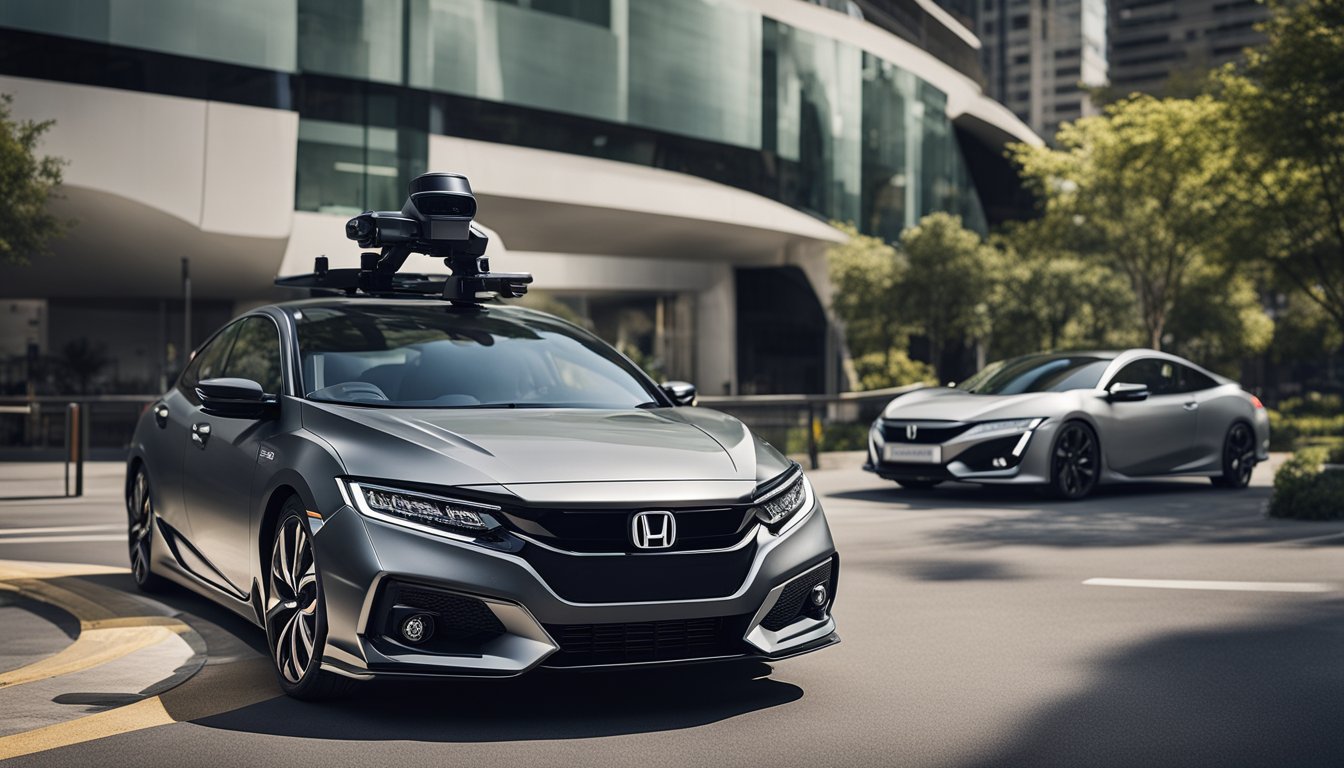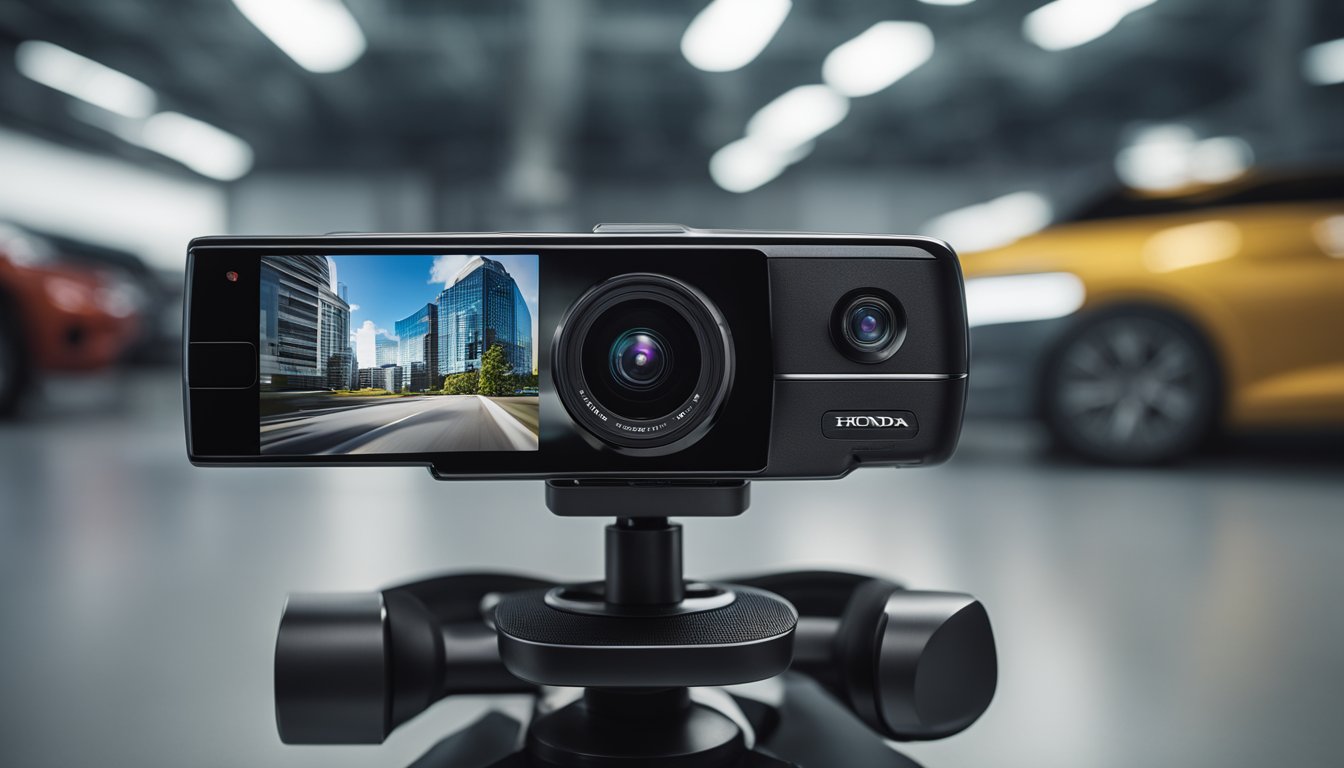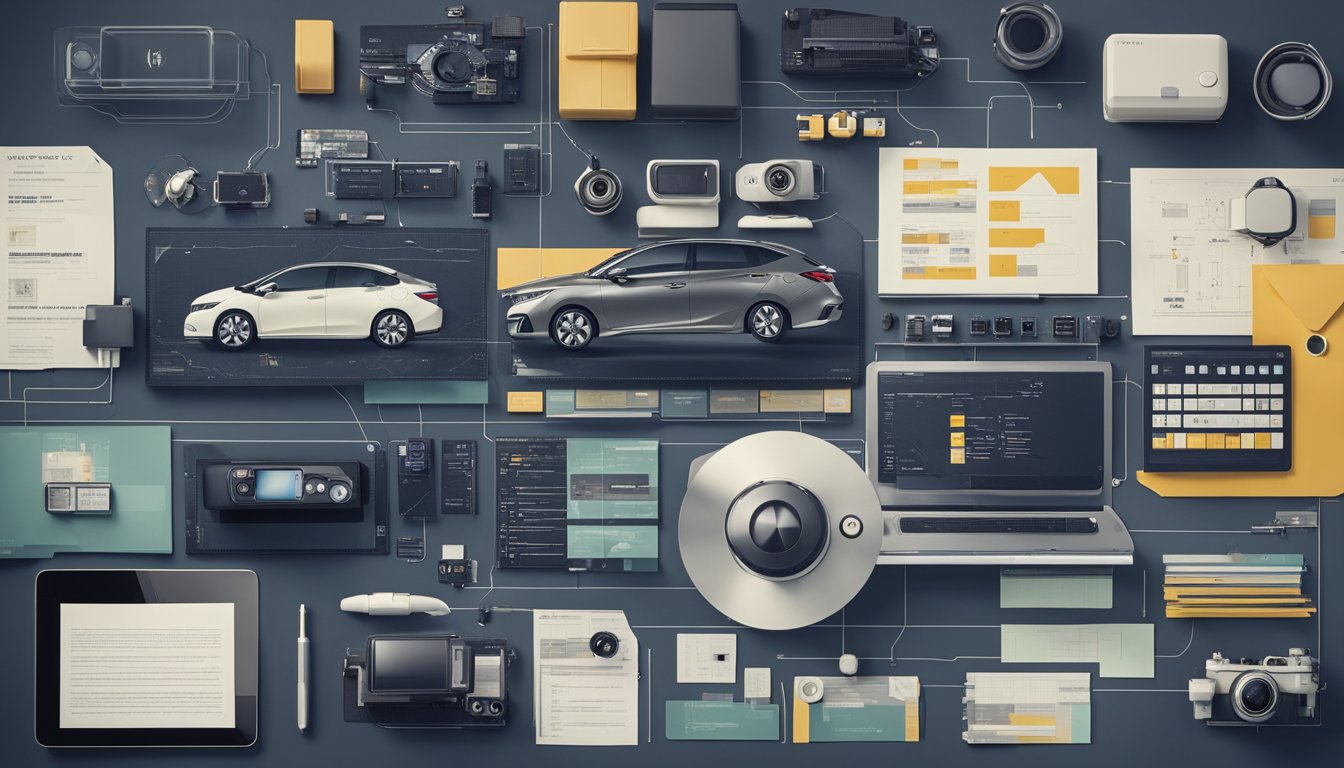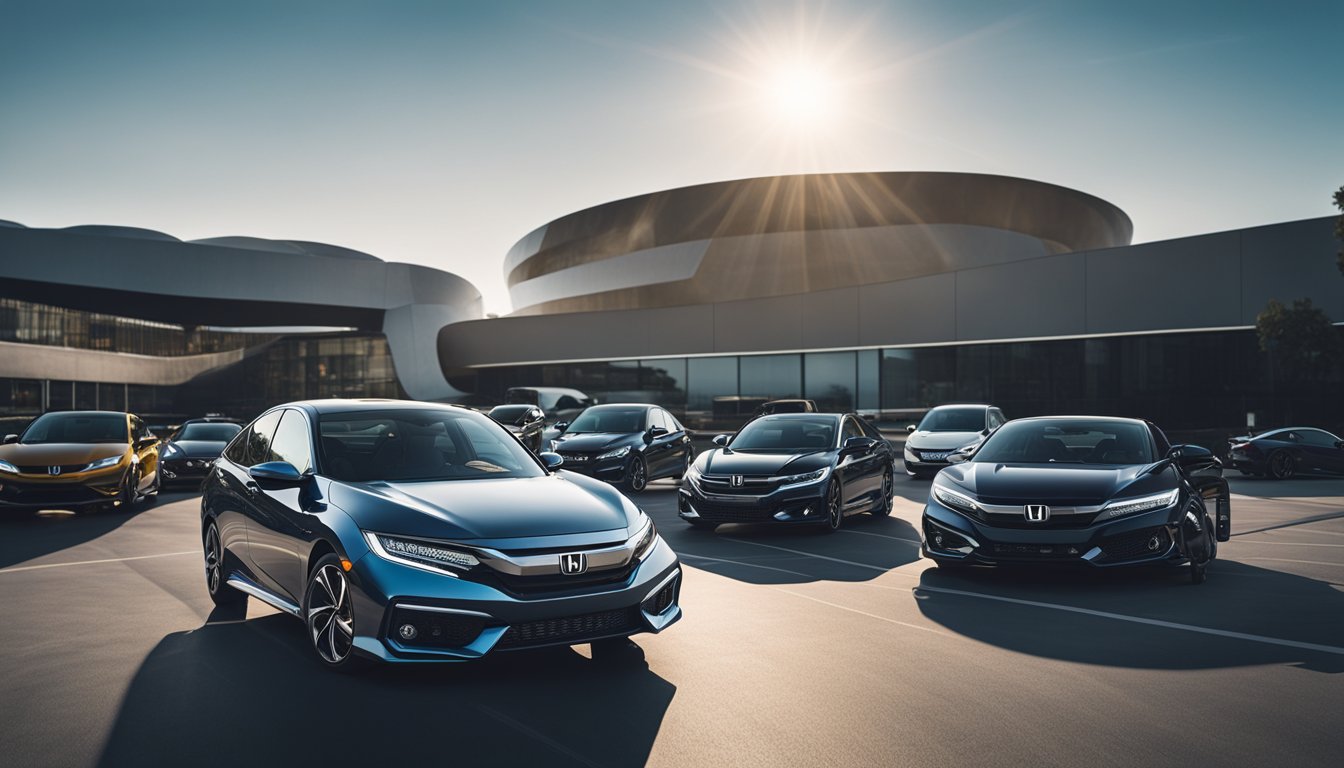If you are in the market for a new car, you may be wondering why Honda doesn’t offer a 360 camera system. While many other automakers have incorporated this technology into their vehicles, Honda has yet to do so. In this article, we will explore the reasons behind Honda’s decision and what alternatives they offer to ensure driver safety.
Honda has always been at the forefront of developing new technologies to enhance the driving experience. However, when it comes to 360 camera systems, Honda has taken a different approach. Instead of relying on cameras alone, Honda has focused on developing a comprehensive suite of driver assistance features. These features include adaptive cruise control, lane departure warning, and blind spot monitoring, among others. By using a combination of sensors and cameras, Honda has been able to provide drivers with a more complete picture of their surroundings.
While 360 camera systems are becoming more popular, they are not without their limitations. For example, these systems can be expensive to install and maintain, and they can be difficult to use in certain weather conditions. Moreover, some drivers may find the constant stream of information overwhelming or distracting. By focusing on a more holistic approach to driver assistance, Honda has been able to provide drivers with a safer and more intuitive driving experience.
Key Takeaways
- Honda has chosen to focus on developing a comprehensive suite of driver assistance features instead of relying solely on 360 camera systems.
- While 360 camera systems are becoming more popular, they are not without their limitations, including cost and usability issues.
- By taking a more holistic approach to driver safety, Honda has been able to provide drivers with a safer and more intuitive driving experience.
The Evolution of Honda’s Camera Technology
https://www.youtube.com/watch?v=MQ-zmil_G28&embed=true
Honda has been a leader in automotive technology for decades. From the early days of backup cameras to today’s advanced safety features, Honda has continued to innovate and improve its camera technology. In this section, we’ll take a look at the evolution of Honda’s camera technology and how it has led to the current state of affairs regarding the lack of 360-degree cameras.
From Backup to Advanced Safety
Honda first introduced backup cameras in 1997 on the Honda Odyssey minivan. At the time, backup cameras were a luxury feature that was only available on high-end vehicles. However, Honda was one of the first automakers to make backup cameras standard on all of its vehicles.
Over the years, Honda has continued to improve its camera technology. In 2013, Honda introduced the Lane Keeping Assist System (LKAS) and the Collision Mitigation Braking System (CMBS). LKAS uses a camera mounted on the windshield to detect lane markings and help keep the vehicle centered in its lane. CMBS uses radar and a camera to detect obstacles in the vehicle’s path and automatically apply the brakes if a collision is imminent.

In 2015, Honda introduced Adaptive Cruise Control (ACC) with Low-Speed Follow. ACC uses radar and a camera to detect the distance between the vehicle and the car in front of it. Low-Speed Follow allows the vehicle to come to a complete stop and automatically resume driving in stop-and-go traffic.
Honda Sensing and Camera Integration
Honda Sensing is a suite of advanced safety features that includes LKAS, CMBS, ACC, and more. Honda Sensing uses a combination of radar and cameras to provide a 360-degree view of the vehicle’s surroundings. However, Honda Sensing does not include a 360-degree camera system.
Honda has not yet made a 360-degree camera system available on its vehicles. While some drivers may prefer the added visibility that a 360-degree camera provides, Honda has focused on integrating its camera technology with other safety features to provide a comprehensive safety package. Blind-spot monitoring is one such feature that uses cameras to provide a view of the vehicle’s blind spots.
In conclusion, Honda has come a long way in terms of camera technology and safety features. While Honda does not offer a 360-degree camera system, its suite of advanced safety features provides a comprehensive safety package that continues to evolve and improve.
Understanding the 360 Camera System
https://www.youtube.com/watch?v=xqWkJJOcU4g&embed=true
« What Is the Best 360 Car Camera for Your Driving Needs?
Does Mercedes Have 360 Camera? A Quick Guide to Mercedes’ Camera Systems »
If you’re wondering why Honda doesn’t have a 360 camera, it’s important to first understand what a 360 camera system is and how it works. A 360 camera system is a set of cameras that provide a complete view of the vehicle’s surroundings. These cameras are placed in strategic locations around the vehicle, such as the front, rear, and sides. The images captured by these cameras are then stitched together to create a seamless, 360-degree view of the vehicle’s surroundings.
How 360 Cameras Enhance Safety
One of the primary benefits of a 360 camera system is that it enhances safety. With a 360 camera system, you can see everything that’s happening around your vehicle, which can help you avoid accidents. For example, if you’re backing out of a parking space and there’s a car coming from the side, a 360 camera system will alert you to the danger.
Bird’s Eye View and Parking Ease
Another benefit of a 360 camera system is that it provides a bird’s eye view of the vehicle, which can be especially helpful when you’re parking. With a bird’s eye view, you can see exactly where your vehicle is in relation to other objects, such as curbs and parking spaces. This can make it easier to park, especially in tight spaces or when parallel parking.
In addition to providing a bird’s eye view, a 360 camera system can also provide parking assistance. Some 360 camera systems come with sensors that can detect the distance between your vehicle and other objects, such as other cars or curbs. These sensors can provide visual and audible alerts when you’re getting too close to an object, which can help you avoid accidents.
Overall, a 360 camera system is a valuable tool for enhancing safety and making parking easier. While Honda doesn’t currently offer a 360 camera system on all of its vehicles, it’s possible that this feature may be added in the future.
Honda’s Approach to Driver Assistance
Honda has long been at the forefront of driver assistance technology, offering a range of features designed to improve safety and convenience on the road. While Honda has been slow to adopt 360-degree camera technology, the company has made significant strides in other areas of driver assistance.
LaneWatch and Blind Spot Innovations
One of Honda’s most notable driver assistance features is LaneWatch, which uses a camera mounted on the passenger-side mirror to provide a live video feed of the vehicle’s blind spot. This innovative technology makes it easier to change lanes safely and avoid collisions with other vehicles.
Honda has also developed a range of other blind spot detection systems that use sensors and radar to identify vehicles in adjacent lanes. These systems provide visual and audible warnings to alert drivers to potential hazards and help prevent accidents.
Collision Mitigation and Steering Assistance
Honda’s collision mitigation technology is designed to help prevent accidents by automatically applying the brakes when it senses an impending collision. This technology uses sensors and radar to detect obstacles in the road and can apply the brakes to prevent a collision or reduce the severity of an impact.
In addition to collision mitigation, Honda offers a range of steering assistance features that help drivers stay on course and avoid accidents. These features include lane departure warning, which alerts drivers when they are drifting out of their lane, and lane keeping assist, which uses sensors and cameras to help keep the vehicle centered in its lane.
While Honda has yet to adopt 360-degree camera technology, the company’s approach to driver assistance is comprehensive and effective. By focusing on blind spot detection, collision mitigation, and steering assistance, Honda has developed a range of features that help drivers stay safe on the road.
Comparing Honda with Competitors
https://www.youtube.com/watch?v=4afeZca-u7g&embed=true
When it comes to 360 camera offerings, Honda seems to be lagging behind its competitors. While some of the other car manufacturers offer surround-view cameras as standard or optional features, Honda does not offer it at all. Let’s take a look at what some of Honda’s competitors have to offer in this regard.
Audi’s and Toyota’s Camera Offerings
Audi and Toyota are two car manufacturers that offer surround-view cameras as standard or optional features. Audi’s 360 camera system, also known as Audi Virtual Cockpit, is a standard feature on most of its models. This system uses four cameras to provide a 360-degree view of the car’s surroundings. Toyota, on the other hand, offers a 360-degree camera system as an optional feature on some of its models. This system uses four cameras to provide a bird’s eye view of the car’s surroundings.
Hyundai and Kia’s Safety Features
Hyundai and Kia are two car manufacturers that offer a range of safety features, including surround-view cameras. Hyundai’s Surround View Monitor uses four cameras to provide a 360-degree view of the car’s surroundings. This system is available as an optional feature on some of its models. Kia’s Surround View Monitor is a standard feature on some of its models. This system uses four cameras to provide a bird’s eye view of the car’s surroundings.
While Honda has been known for its safety features, it seems to be falling behind in terms of 360 camera offerings. Other car manufacturers like Audi, Toyota, Hyundai, and Kia are offering surround-view cameras as standard or optional features. It remains to be seen whether Honda will catch up with its competitors in this regard.
Honda’s Target Market and Business Strategy
When it comes to Honda’s target market and business strategy, the company has always focused on producing reliable, family-friendly vehicles that balance cost and advanced technology. This approach has made Honda a popular choice for families who prioritize safety and practicality.
Safety Features in Family Vehicles
Honda has always placed a strong emphasis on safety, particularly in its family vehicles such as the Accord, CR-V, Pilot, and Odyssey. These vehicles come equipped with a variety of advanced safety features, including:
-
Multi-Angle Rearview Camera: This feature provides a better view of the area behind the vehicle, making it easier to park and maneuver in tight spaces.
-
Blind Spot Information System: This system alerts you when there is a vehicle in your blind spot, reducing the risk of accidents when changing lanes.
-
Lane Departure Warning: This feature alerts you when you start to drift out of your lane, helping you stay on course and avoid collisions.
-
Collision Mitigation Braking System: This system can detect when a collision is imminent and apply the brakes to help reduce the impact.
Balancing Cost and Advanced Technology
While safety is a top priority for Honda, the company also understands the importance of balancing cost and advanced technology. Honda’s business strategy has always focused on providing high-quality vehicles at an affordable price point, which has helped the company maintain its competitive edge in the market.
When it comes to advanced technology, Honda has been somewhat cautious in its approach. While some competitors have been quick to adopt features such as 360-degree cameras, Honda has taken a more measured approach, focusing on developing and perfecting its existing safety features rather than adding new ones.
Overall, Honda’s target market and business strategy reflect the company’s commitment to producing reliable, family-friendly vehicles that balance cost and advanced technology. If you’re in the market for a new vehicle and prioritize safety and practicality, a Honda may be the perfect choice for you.
Technological Constraints and Opportunities
The Challenge of Integrating 360 Cameras
Integrating 360 cameras into a car’s safety system is a complex process. Honda has been working to improve their safety systems, including the Honda Sensing 360, which is designed to provide drivers with a more comprehensive view of the road. However, the challenge of integrating 360 cameras into the system is not just about the technology itself, but also the cost and complexity of the system.
360 cameras require multiple cameras to be installed around the car, which can increase the cost of production. Additionally, the cameras need to be calibrated and synchronized to provide an accurate view of the car’s surroundings. This calibration process can be time-consuming, which can further increase the cost of production.
Despite these challenges, Honda is working to integrate 360 cameras into their safety systems. They recognize the importance of providing drivers with a more comprehensive view of the road, and they are committed to finding ways to make this technology more accessible and affordable.
Future Developments in Honda’s Safety Systems
Honda is continuously working to improve their safety systems, including the Honda Sensing 360. They are exploring new technologies, such as artificial intelligence (AI), to enhance the capabilities of their safety systems. AI can help improve the accuracy and reliability of the 360 cameras, making them more effective in detecting potential hazards on the road.
Honda is also exploring ways to upgrade their existing safety systems to include 360 cameras. They are looking at ways to make the installation process more efficient and cost-effective, while still maintaining the accuracy and reliability of the cameras.
In the future, Honda’s safety systems will continue to evolve and improve. They are committed to providing drivers with the most advanced safety technology available, including 360 cameras, to help keep them safe on the road.
Consumer Preferences and Market Trends
Demand for Safety and Innovation
When it comes to cars, safety features are a top priority for consumers. According to a survey conducted by Consumer Reports, 72% of respondents consider safety features to be extremely important when buying a car. As such, car manufacturers are expected to provide innovative safety features that address the concerns of their customers.
360-degree camera systems are among the most popular safety features in modern cars. These systems provide drivers with a bird’s eye view of their surroundings, which can be especially useful when parking or reversing. They are also helpful in detecting obstacles that may be outside the driver’s line of sight.
The Role of Customer Feedback
Customer feedback plays a crucial role in the development of new car features. Car manufacturers rely on customer feedback to understand what features are in demand and how they can improve existing features. According to Honda, the company is committed to listening to its customers and using their feedback to improve its safety features.
However, it’s worth noting that not all customers demand the same features. As a Reddit thread on the Honda CR-V highlights, some customers may not see the need for a 360-degree camera system in their cars. This may be because they don’t frequently park in tight spaces or because they don’t find the feature particularly useful.
In conclusion, the demand for safety features and innovation is high among car consumers. However, the specific features that customers demand may vary. As such, car manufacturers like Honda need to strike a balance between providing innovative features and meeting the specific needs of their customers.
The Role of Regulations in Camera Systems
Safety Standards and Legal Requirements
When it comes to vehicle safety, regulations play a critical role in ensuring that automakers meet certain standards. In the United States, the National Highway Traffic Safety Administration (NHTSA) sets safety standards and regulations for all vehicles sold in the country. One such regulation is the Federal Motor Vehicle Safety Standard (FMVSS) 111, which requires all new vehicles to have a rearview camera system. This regulation went into effect in 2018, and it has been instrumental in reducing accidents caused by backing up.
However, regulations for 360 camera systems are not yet in place. While some automakers, such as Acura, have already started offering 360 camera systems, others, like Honda, have yet to do so. This is likely due to the lack of regulations and legal requirements for such systems.
Impact on Honda’s Camera Offerings
Without regulations in place, Honda may be hesitant to invest in 360 camera systems. Developing and implementing such systems can be costly, and without a clear market demand or legal requirement, it may not be a sound business decision. Additionally, Honda has been focusing on developing and improving its existing safety features, such as the Honda Sensing system, which uses cameras and sensors to help drivers avoid collisions.
However, as regulations and safety standards continue to evolve, it is possible that 360 camera systems will become a legal requirement in the future. In fact, Honda has already started working on its own 360 camera system, called Honda Sensing 360, which it plans to incorporate into its vehicles in the coming years. As regulations and safety standards continue to evolve, it is likely that more automakers will follow suit and start offering 360 camera systems as well.
In summary, regulations play a critical role in shaping automakers’ decisions when it comes to safety features like camera systems. While 360 camera systems are not yet a legal requirement, it is possible that they will become one in the future. As automakers like Honda continue to innovate and improve their safety features, it is likely that 360 camera systems will become more prevalent in the automotive industry.
Exploring the Cost of Safety Upgrades
https://www.youtube.com/watch?v=ITNq3BilX8g&embed=true
When it comes to upgrading safety features in a car, many people wonder about the cost. After all, adding more advanced safety features can often mean a higher price tag. However, when it comes to investing in safety upgrades, it’s important to consider the potential benefits.
Investing in Safety vs. Other Features
While adding a 360 camera to a car is certainly a desirable feature, it’s important to remember that safety should always be the top priority. When considering whether to invest in a 360 camera or other optional features, it’s important to weigh the potential safety benefits against the cost.
For example, some optional features like a sunroof or leather seats may be nice to have, but they don’t necessarily enhance safety. On the other hand, features like a blind spot monitor or lane departure warning system can help prevent accidents and keep you safe on the road.
The Price of Adding a 360 Camera
Adding a 360 camera to a car can be expensive, and it’s important to understand the cost before making a decision. The price of adding a 360 camera can vary depending on the make and model of the car, as well as the specific camera system being used.
In addition to the cost of the camera itself, there may also be installation costs to consider. Depending on the car, adding a 360 camera may require additional wiring or modifications, which can add to the overall cost.
While a 360 camera is certainly a desirable feature, it’s important to consider the potential safety benefits against the cost. Ultimately, investing in advanced safety features like a blind spot monitor or lane departure warning system may be a better choice for keeping you and your passengers safe on the road.
How to Maximize Your Honda’s Safety Features
https://www.youtube.com/watch?v=c6R88vD_T6U&embed=true
Honda vehicles come equipped with a variety of advanced safety features that can help you stay safe on the road. Here are some tips on how to use these features to their full potential and make the most of your driving experience.
Using Honda Sensing to Its Full Potential
Honda Sensing is a suite of advanced safety and driver-assistive technologies designed to help you stay alert and aware of your surroundings while driving. It includes features such as adaptive cruise control, lane departure warning, and collision mitigation braking system.
To use Honda Sensing to its full potential, make sure to keep the sensors and cameras clean and free of dirt and debris. Also, be sure to keep your hands on the wheel and stay alert while driving. Honda Sensing is designed to assist you, but it is not a substitute for safe driving practices.
Tips for Safe Driving and Parking
In addition to Honda Sensing, there are several other safety features that can help you stay safe on the road. Here are some tips for safe driving and parking:
-
When driving on the expressway, use the adaptive cruise control feature to maintain a safe following distance from the vehicle in front of you.
-
When navigating through curves in the road, use the lane departure warning feature to stay centered in your lane.
-
When parking your Honda, use the parking assistance feature to help you park in tight spaces.
-
When driving at low speeds, use the collision mitigation braking system to help prevent collisions with other vehicles or objects.
By following these tips and using the advanced safety features available on your Honda, you can help ensure a safe and enjoyable driving experience for you and your passengers.
Frequently Asked Questions
What models of Honda come equipped with a 360-degree camera system?
As of December 2023, Honda has not offered any models with a 360-degree camera system. However, some models, such as the 2023 Honda Pilot, come equipped with a multi-view camera system that provides a bird’s-eye view of the vehicle’s surroundings.
How does Honda’s multi-view camera system compare to a 360-degree camera?
While a 360-degree camera provides a complete view of the vehicle’s surroundings, Honda’s multi-view camera system provides a top-down view of the vehicle’s surroundings. This can be useful for parking and maneuvering in tight spaces, but it does not provide a complete view of the vehicle’s surroundings.
Are there plans to include 360-degree cameras in future Honda models?
Honda has not announced any plans to include 360-degree cameras in future models. However, the company has been known to incorporate new technologies into its vehicles over time.
What are the benefits of having a 360-degree camera in a vehicle?
A 360-degree camera can provide a complete view of the vehicle’s surroundings, making it easier to park and maneuver in tight spaces. It can also provide added safety benefits by alerting drivers to potential hazards that may not be visible through traditional mirrors and cameras.
Can a 360-degree camera be installed aftermarket in a Honda vehicle?
It is possible to install an aftermarket 360-degree camera in a Honda vehicle, but it may void the vehicle’s warranty and could potentially cause issues with the vehicle’s existing camera and safety systems. It is recommended to consult with a professional installer before making any modifications to a vehicle’s camera system.
Why might Honda choose not to offer a 360-degree camera in their vehicles?
There are several reasons why Honda may choose not to offer a 360-degree camera in their vehicles. One reason may be cost, as 360-degree camera systems can be expensive to develop and implement. Another reason may be that Honda believes their multi-view camera system provides sufficient visibility for drivers. Additionally, Honda may prioritize other features and technologies over a 360-degree camera system.












